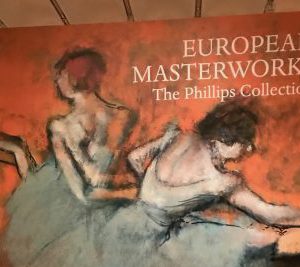The newest exhibit at the High Museum of Art features work by some of France’s most revered artists of the late 1800s. The star of the exhibit is undoubtedly one of the most iconic artists of all time — Henri Toulouse-Lautrec — known the world over for his Moulin Rouge posters.
There are more than 80 pieces in the “Toulouse-Lautrec & Friends” exhibit, many of which were given to the High by well-known Atlanta art collectors Irene and Howard Stein. Upon entering the exhibit, located adjacent to the main building, dozens of sculptures are on display — some encased in glass, some not. The sculptures range in size and texture — from small Terracottas to large marble busts. People make up most of the subjects, however some animals are featured.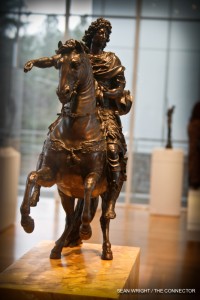 One sculpture that is exceptionally stunning is a bronze of Louis XIV on horseback by Flemish artist Martin Desjardins. The bronze sits high on a pedestal and is rich in detail. If you look closely, you can make out several little faces intricately carved in his armor plates.
One sculpture that is exceptionally stunning is a bronze of Louis XIV on horseback by Flemish artist Martin Desjardins. The bronze sits high on a pedestal and is rich in detail. If you look closely, you can make out several little faces intricately carved in his armor plates.
After passing through the sculpture room, you can take the elevator or stairs to the main exhibit hall to view Toulouse-Lautrec’s work. The collection includes several rare prints by Toulouse-Lautrec as well as illustrations by Edgar Degas, among others. The iconic “Moulin Rouge: La Goulue” is by far, the most dominating piece in the collection.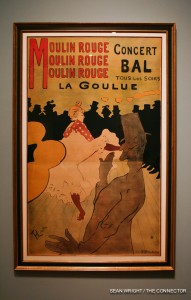 Your eyes are immediately drawn to the print due to its sheer size and vibrant colors. Replications are no substitute for seeing the print in person. In addition to the aesthetic, the process in which the print was made makes “Moulin Rouge: La Goulue” especially intriguing. David Brenneman, the High’s director of collections and exhibitions, explained that Lautrec had never previously used lithography to create art. Brenneman continued, “It’s a print composed of three separate prints … pasted together … for a first effort, it is absolutely amazing.”
Your eyes are immediately drawn to the print due to its sheer size and vibrant colors. Replications are no substitute for seeing the print in person. In addition to the aesthetic, the process in which the print was made makes “Moulin Rouge: La Goulue” especially intriguing. David Brenneman, the High’s director of collections and exhibitions, explained that Lautrec had never previously used lithography to create art. Brenneman continued, “It’s a print composed of three separate prints … pasted together … for a first effort, it is absolutely amazing.”
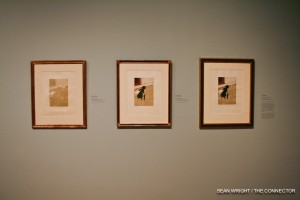 Making your way through the collection, there are a few pieces that garner attention. A series of prints by Pierre Bonnard titled “The Little Laundry Girl” helps you visualize the lithographic process as each print represents a different stage. Two of Toulouse-Lautrec’s most famous works inspired by prostitutes are “The Seated Clowness” and “The Standing Clowness.”
Making your way through the collection, there are a few pieces that garner attention. A series of prints by Pierre Bonnard titled “The Little Laundry Girl” helps you visualize the lithographic process as each print represents a different stage. Two of Toulouse-Lautrec’s most famous works inspired by prostitutes are “The Seated Clowness” and “The Standing Clowness.”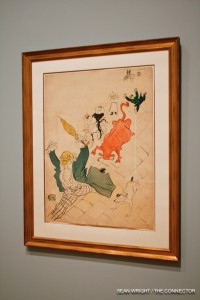 The lithographs complement each other well, even though they are hung on opposite walls. Both prints are full of bright yellows and rich oranges with pinks hues, which invoke a je ne sais quoi.
The lithographs complement each other well, even though they are hung on opposite walls. Both prints are full of bright yellows and rich oranges with pinks hues, which invoke a je ne sais quoi.
Although tucked away in a corner, “Jane Avril” is magnificent. The lavish frame that hugs the print creates a beautiful contrast. Together, they are breathtaking. Last, but not least, the wildly fantastical “The Mad Cow.” This piece was Toulouse-Lautrec’s way of mocking a recent political scandal. Here, he does a wonderful job with perspective while creating a chaotic scene. In the foreground, a green-faced monster runs away from what looks like a bull in the background, while clowns on bicycles chastise him.
Toulouse-Lautrec & Friends is on display at the High Museum of Art until May 1. For more information, click here.

























